Lane surface and oil pattern are what make up the playing field in bowling.
Choosing the right bowling ball for the lane surface and oil pattern you are bowling on can be the difference between winning and losing your next competition.
In part three of our series, you’ll learn what bowling balls you need to bowl on any pattern and what it takes to maintain them.
Strong or Aggressive Bowling Balls
Strength in a bowling ball is when the bowling ball digs into the oil on the lane.
Strong bowling balls’ coverstock are dull in appearance and read the lane early, giving you a smooth ball reaction.
They are a good choice for longer oil patterns with higher volumes of oil.

Part of the misconception amongst bowlers when discussing strong and weak bowling balls is that there is a tendency to read the lane side-to-side, rather than front-to-back.
When a stronger bowling ball is too strong for the pattern you are bowling on, it will use up the majority of its energy through the front part of the lane and will appear weak down lane, not giving you the desired back-end reaction toward the pocket you’re looking for.
That’s where some confusion over time has come into play because many bowlers read the lane side-to-side instead of front-to-back. If it wasn’t “hooking enough” at the back end of the lane it must be a weaker bowling ball.
This we know now to be untrue.
Weaker or Cleaner Bowling Ball
Conversely, weak or cleaner bowling balls have a shiny coverstock and skid more through the front part of the lane, storing up its energy for more side-to-side motion down lane.
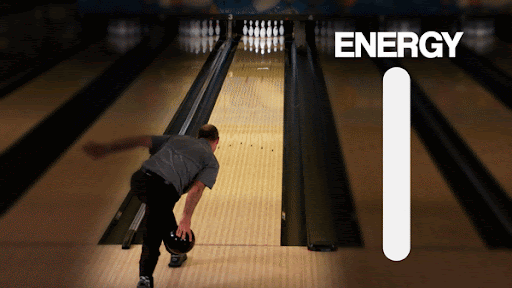
If your bowling ball isn’t giving you as much back-end direction as you need, the move is to go to a weaker or cleaner bowling ball, not a stronger bowling ball.

Bowling Ball Arsenal
Most bowling centers lay the same house shot for league night week in and week out. This doesn’t mean that they will play exactly the same every week, but in large part, you know what to expect.
When building a league arsenal (bowling balls in your bag) the most important bowling ball is the plastic spare ball.
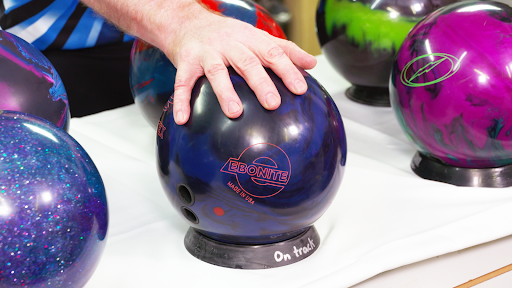
Plastic bowling balls do not hook, so oil distance and volume do not affect how it rolls down the lane. You can shoot spares exactly the same every time on any oil pattern.
Having a plastic spare ball and a consistent spare system will lead to more spare conversions and increase your average.
The next bowling ball you’ll need is a benchmark bowling ball. Typically, the surface of this bowling ball is smoother and provides a predictable ball motion down lane.
Lastly, you’ll need a bowling ball to bring out of your bag when the lanes transition (oil volume and shape depletes from the amount of play on it).
A shinier coverstock bowling ball will skid longer and break or hook in the backend providing more right-to-left motion down lane for a right-handed bowler when the lanes transition.
Tournament Bowling
Before deciding what bowling balls go into your tournament bowling bag, you’ll need to know the tournament’s format.
- Is it a one day event or multiple days?
- How many games are you going to bowl?
- How many bowlers are competing?
- What’s the oil pattern? (If they release it)
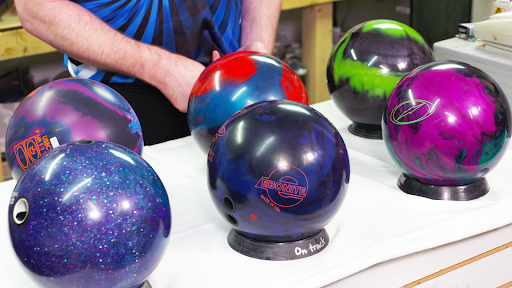
From here, depending on how many games and how often they are oiling the lanes, you’ll determine how many weaker and stronger bowling balls you’ll carry. Urethane is always good to have for short patterns and when you are moving the shot right.
Different layouts, pin up, pin down and different grit sanding pads will help you fine-tune your line and keep you in the pocket.
Coverstock
Abralon pads, Mirka pads, and TruCut sanding pads are used to adjust the bowling ball’s surface. The lower the grit sanding pad, the earlier the ball hooks down lane. Conversely, the higher the number on the sanding pad the later the bowling ball hooks down the lane.
Polish
We took a bowling ball with a shiny finish and threw it down the lane. It hit the 13 at the arrows and 7 board down the lane at the breakpoint and the result was a strike.

1000 Grit Sanding Pad
Using the same bowling ball, we applied a 1000 grit Abralon pad to the surface of the bowling ball.
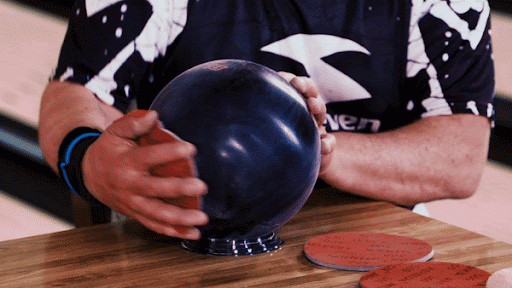
The result was a 4-9 split. That’s okay. The purpose of this demonstration is to show that the bowling ball hits the same place at the arrows (13) and that the breakpoint changes from the 7 board to 9 board.
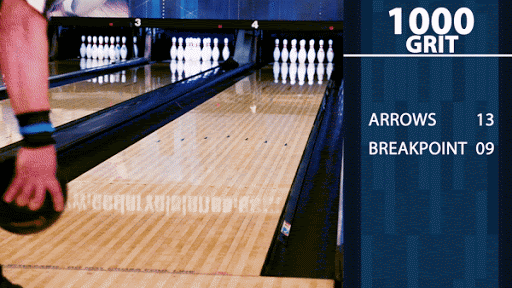
You’ll also notice that the bowling ball begins hooking earlier down lane than the polish.
This demonstration shows that by changing the surface of the bowling ball, you can change ball reaction to better match up to the lane condition you are competing on.
500 Grit Sanding Pad
Continuing on with the demonstration, we hit the same bowling ball with a 500 grit sanding pad and targeted the same 13 board at the arrows.
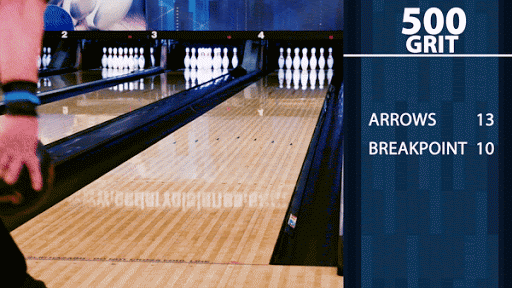
The bowling ball’s breakpoint is at the 10 board down lane and it began to hook earlier than both the polished and 1000 grit bowling ball.
360 Grit Sanding Pad
For our final shot, we applied a 360 grit sanding pad to the same bowling ball and targeted the same 13 board at the arrows.
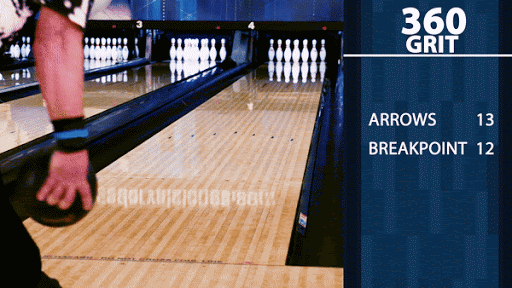
The bowling ball hooks even earlier down the lane, hitting the 12 board for the breakpoint.
Regular maintenance of your equipment requires changing the surface of your bowling ball in addition to cleaning it to get the most out of your equipment.
Don’t forget to stop into your pro shop every 75 games or so to have the ball resurfaced. This will help when you think you’ve made every adjustment possible and can’t seem to carry those corner pins.

Share tips, start a discussion or ask one of our experts or other students a question.
Already a member? Sign in
No Responses to “Becoming a More Versatile Bowler - Part 3”